Hey all! Real Farmer Jeff here.
This year, I grew napa cabbage for my wife, Kyrié, who loves making kimchi, a spicy, fermented Korean dish she grew up eating as a half-Japanese kid. I also grew up eating it thanks to my two Korean sisters. Now, making kimchi is something we enjoy doing together, a meaningful tradition we’ve made our own.
One of the most important fundamentals of making kimchi involves understanding lacto-fermentation, which gives it that signature tang and depth of flavor. It’s one of the oldest, healthiest, and most natural ways to preserve food.
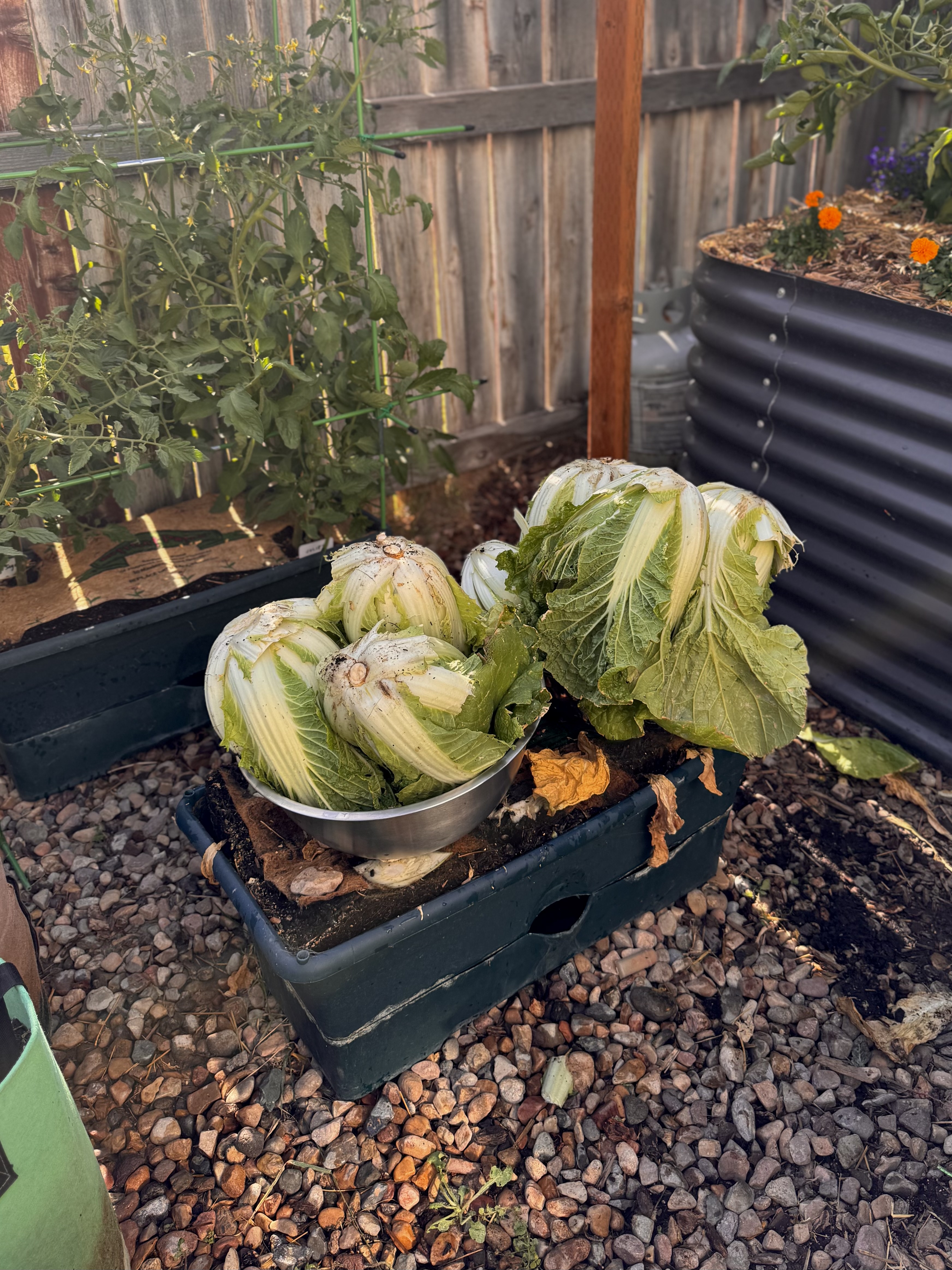
I recommend everyone try lacto-fermentation because it is inexpensive and can promote a healthy diet. Learning to preserve one’s food is an extremely useful skill. And, if you’re a gardener like me, it’s especially a great way to utilize and preserve your harvest!
In this post, I’ll break down what lacto-fermentation is and explore it in more detail. Let’s get started!

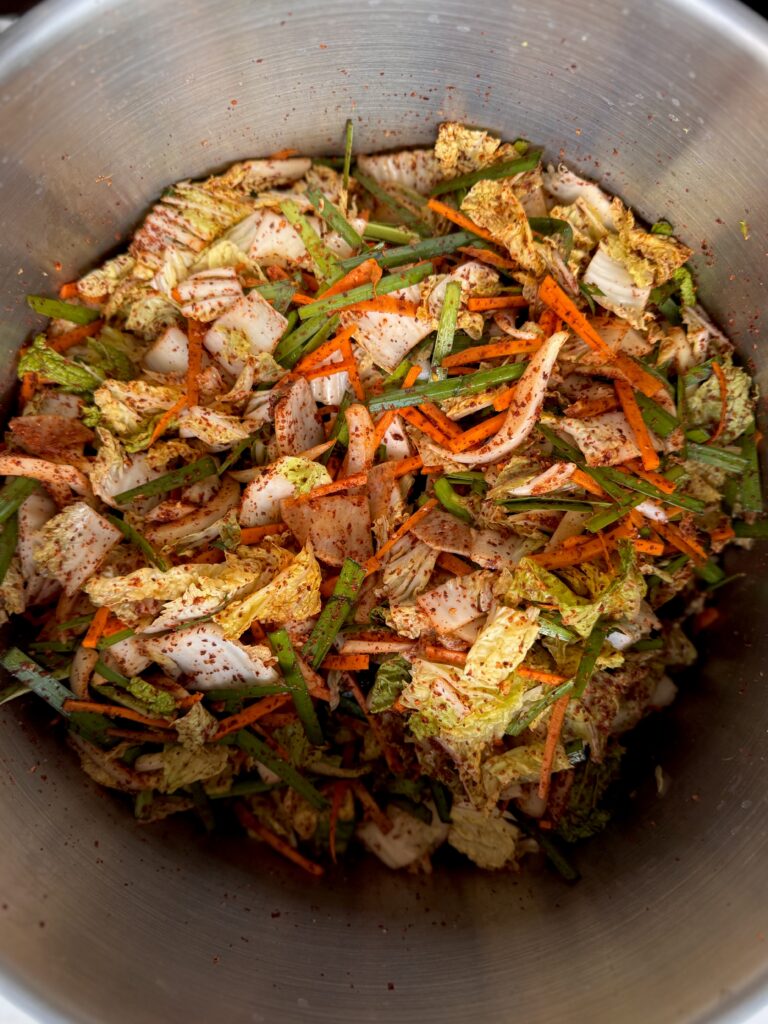
What is Lacto-Fermentation?
Lacto-fermentation is a process in which naturally occurring lactic acid bacteria convert sugars in food into lactic acid. This acid lowers the pH, creating a tangy flavor while preserving the vegetables and preventing spoilage.
You may be surprised that the key is salt! A salty brine suppresses harmful microbes while letting the good bacteria thrive. The good bacteria multiplying is what ultimately leads to an increased level of fermentation.
I find it so cool that the acidity in fermented foods comes internally from microbial activity and not from something you add at the start. That’s why some may consider lacto-fermented pickles (or other foods) to be “true” pickling.
Unlike quick pickling, which uses vinegar, true fermentation relies on naturally occurring lactic acid bacteria for the preservation process.
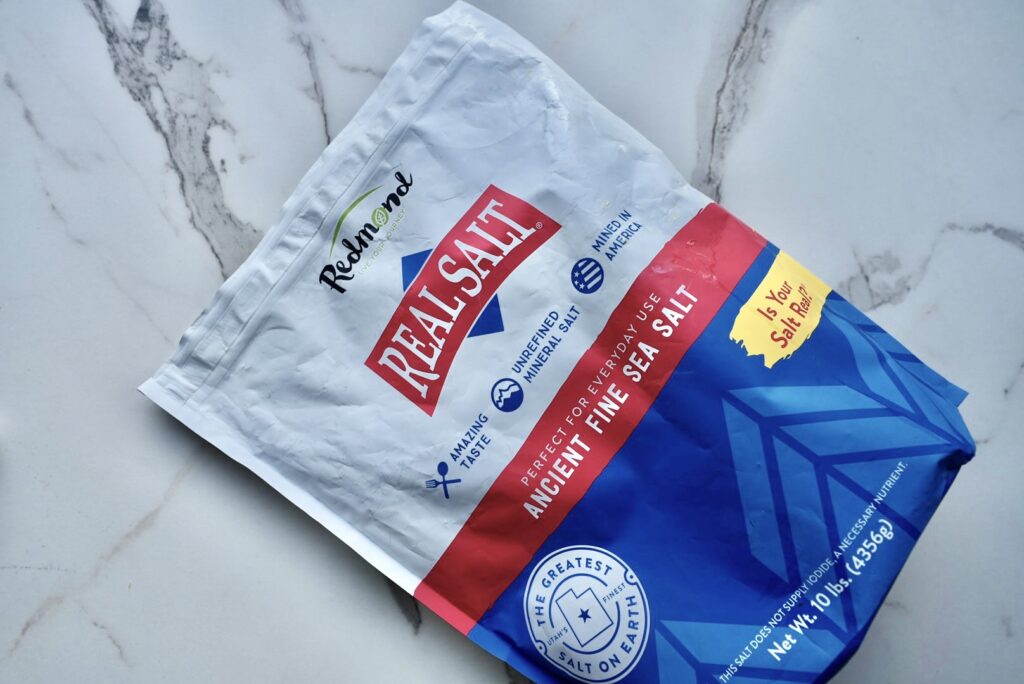
What Salt Should I Use?
For the best lacto-fermented vegetables, it’s important to use unrefined sea salt. Unrefined salt, like traditional Korean sea salt (cheonilyeom), is free from additives such as iodine and anti-caking agents, which can interfere with fermentation and alter the flavor. It also retains trace minerals that contribute to a cleaner, more balanced taste.
The coarse texture of unrefined salt helps draw moisture from the vegetables slowly and evenly, allowing for a better crunch and more consistent fermentation. I always like to buy a large bag of my favorite unrefined sea salt because it’s nice to have in bulk. It’s an additive-free salt rich in natural trace minerals, providing a clean and balanced flavor. Harvested sustainably from an ancient sea bed in Utah and contains no chemicals or anti-caking agents.
6 Reasons Your Diet Should Include Fermented Foods:
Lacto-fermented vegetables don’t just taste amazing, but they’re also packed with functional health benefits. Below are 6 reason your diet should include fermented foods:
- Improved Digestion: Fermentation breaks down complex carbs, sugars, and fibers, making foods easier to digest—especially for people sensitive to raw vegetables.
- Gut Health Boost: Fermented foods are rich in beneficial probiotics like Lactobacillus, which help balance your gut microbiome and support your immune system.
- Enhanced Nutrient Absorption: Fermentation increases the bioavailability of nutrients. It reduces anti-nutrients (like phytic acid) that can block absorption of minerals, and it helps your body better utilize key vitamins like B vitamins and vitamin K2.
- Naturally Low in Calories and Fat-Free: Most fermented vegetables (like kimchi, sauerkraut, and radish pickles) are nutrient-dense but low in calories and virtually fat-free.
- High in Fiber: Fermented vegetables retain their natural fiber, supporting digestion, fullness, and gut motility.
- May Help Regulate Blood Sugar: Some research suggests fermented foods improve insulin sensitivity and can help reduce post-meal blood sugar spikes.
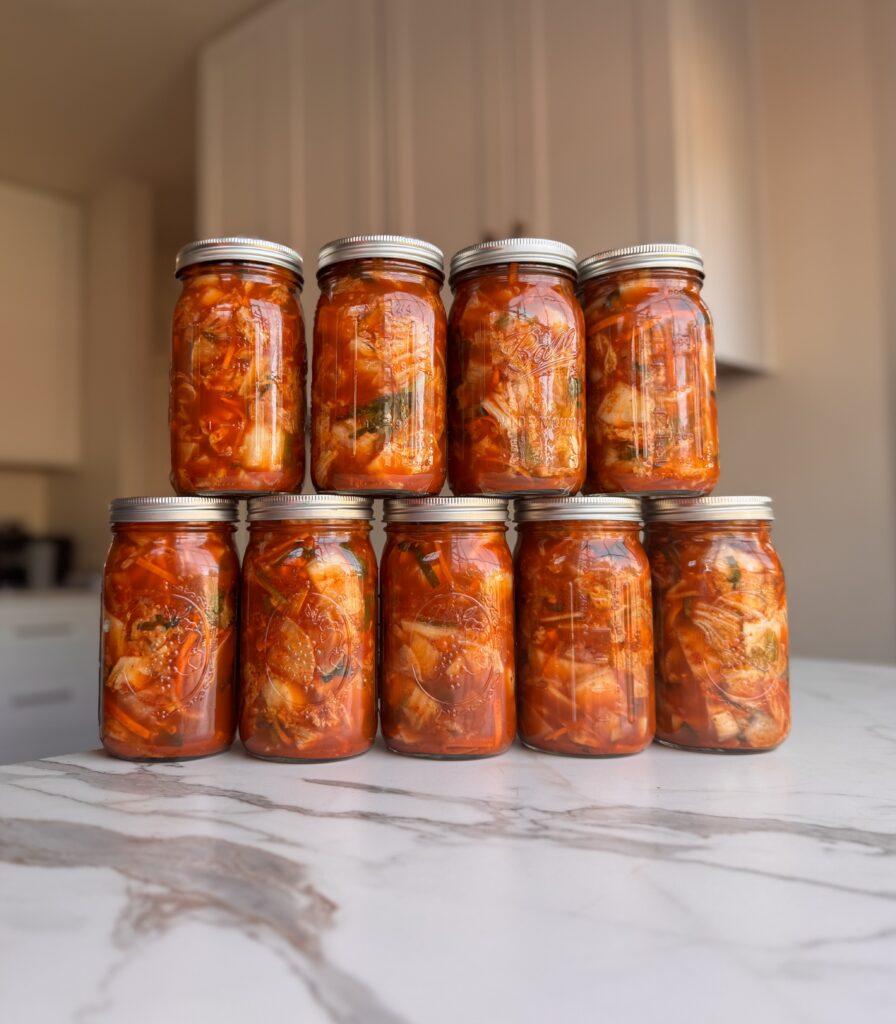
Fermentation Jars: Why They’re Great for Kimchi
When I make kimchi, I prefer to use a ceramic fermentation jar with weights to keep the vegetables submerged in the salty brine.
Many fermentation jars come with a wooden pole that is used to compress the food to remove air pockets, ensure all the vegetables are covered in the brine, and make sure fermentation happens evenly. In addition to ceramic crocks, other common fermentation setups include:
- Mason jars with airlock lids: Great for small batches and controlling airflow. Airlock lids automatically release fermentation gases while preventing oxygen and contaminants from entering, eliminating the need to manually ‘burp’ your jars.
- Glass jars with plastic lids: Budget-friendly; just be sure to “burp” them daily to release gases.
- Fermentation kits: These come with silicone valves or spring-loaded weights and are user-friendly. Also, they may use mason jars or other containers.
No matter the setup, the #1 rule is: keep everything submerged to prevent mold. Exposure to air (above the brine) can lead to mold or spoilage. The salty brine creates an oxygen-free environment that encourages good lactic acid bacteria to thrive.
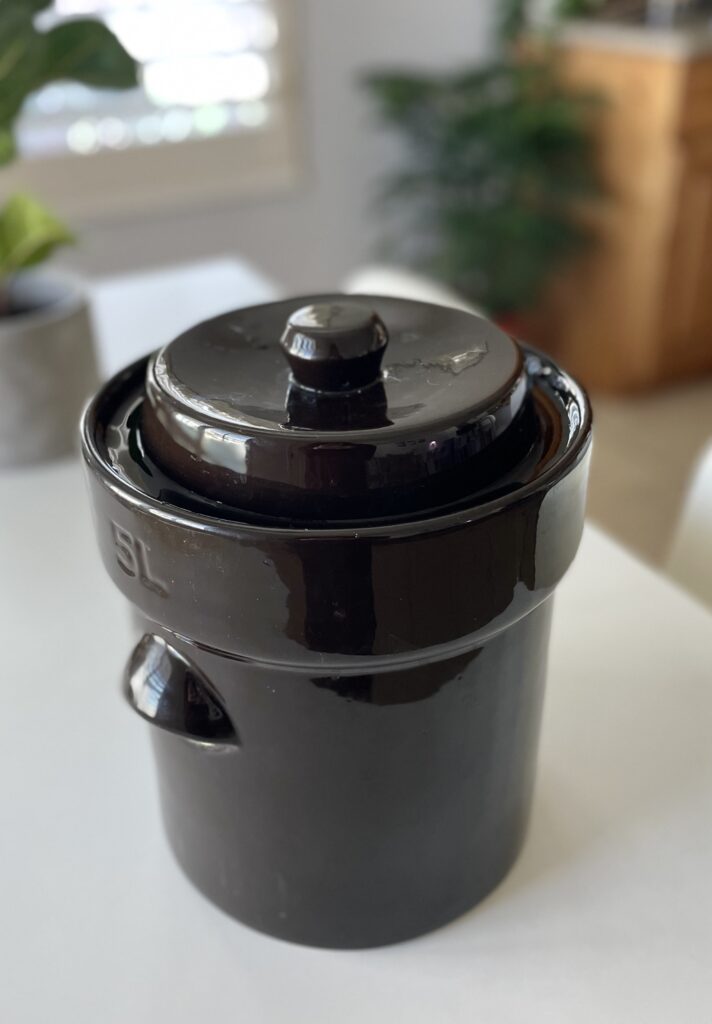
How Long Should You Ferment?
Fermentation isn’t one-size-fits-all. Timing depends on the food, your environment, and your taste preferences. For example, with kimchi:
- 1–3 days at room temperature (65–75°F): Very mild, subtle tang, and crisp texture.
- 1–2 weeks: Traditional flavor with deeper tang and softness.
- 3–4 weeks: Strong, sour, aged kimchi – great for cooking (like kimchi jjigae).
- 28 days+: Yes, you can ferment kimchi this long! In fact, aged kimchi is highly prized in Korean cuisine. You can even age it in the fridge for several months.
A common method is to ferment kimchi at room temperature for 1–4 days to kickstart the process, then move it to the fridge for slow aging and flavor development.
Temperature & Fermentation Time
Temperature is one of the biggest factors in determining both how long to ferment and what kind of flavor you get. Typically, cooler = slower; warmer = faster. But faster isn’t always better – longer ferments often mean more complexity and more safety:
| Temperature | Time to Ferment | Flavor Profile |
|---|---|---|
| 75–80°F (24–27°C) | 1–3 days | Fast souring, more risk of soft texture |
| 65–70°F (18–21°C) | 3–7 days | Balanced, ideal ferment |
| 55–60°F (13–16°C) | 10–21+ days | Milder, crisp, and nuanced flavor |
| Fridge (38–42°F / ~4°C) | Weeks to months | Very slow ferment, deep complex taste |
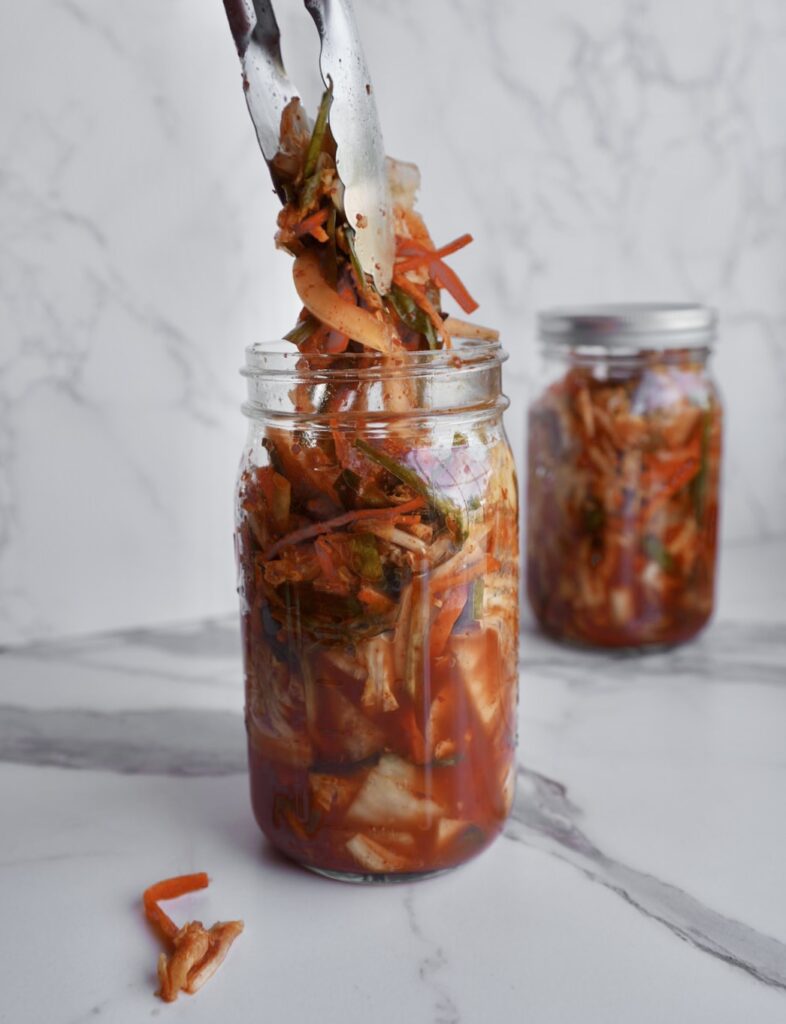
How Long Do Lacto-Fermented Foods Last?
After the initial fermentation at room temperature (usually 1–7 days, depending on the recipe and temperature), lacto-fermented foods are best stored in the refrigerator to slow down fermentation (otherwise they can become overly sour) and preserve their flavor and texture. Refrigeration also extends the shelf life by maintaining a stable environment and reducing spoilage risk.
When properly refrigerated, lacto-fermented vegetables can last 6 months or longer. Over time, flavor will continue to develop and may become more sour, but the ferment remains safe to eat as long as it looks, smells, and tastes good. Just be sure to keep the vegetables submerged in brine for preservation purposes.
Fermentation Around the World: A Common Thread in Healthy Cultures
One of the most compelling reasons to include fermented foods in your diet comes from looking at how they show up in some of the healthiest traditional diets around the globe. Here’s a few examples:
South Korea: In South Korea, kimchi is a daily staple – not just for flavor, but for health. It’s deeply rooted in culture and linked to better gut health, metabolism, and reduced inflammation.
Japan: Home to one of the highest life expectancies in the world, Japan includes a variety of fermented foods in its traditional diet, like miso, natto, tsukemono, and soy sauce. Rich in probiotics, these foods support digestion, immunity, and overall longevity. I was introduced to many of these fermented foods after marrying my wife, Kyrié, who is half Japanese and cooks a lot of Japanese food at home.
Eastern Europe: In places like Poland, Russia, and the Balkans, fermented cabbage, root vegetables, and dairy (like kefir) are dietary staples, especially through long winters. These cultures have long relied on fermentation for preservation and gut health, and kefir, in particular, is known for its powerful probiotic profile.
West Africa: In parts of West Africa, fermented foods like ogiri (fermented melon seeds), iru (fermented locust beans), and fermented cassava are daily ingredients in cooking. These foods help boost nutrition and support gut health, especially in diets that are otherwise high in starches.
The Mediterranean & Blue Zones: Even in the famously healthy Mediterranean diet, fermented cheeses, olives, yogurt, and sourdough breads play a quiet but important role.
| Food | Region/Culture | Notes |
|---|---|---|
| Kimchi | Korea | Napa cabbage, daikon, garlic, and gochugaru; staple Korean side dish. |
| Sauerkraut | Germany, Eastern Europe | Shredded cabbage fermented with salt; often eaten with meat dishes. |
| Pickled cucumbers | Jewish, Eastern European, American deli culture | Naturally fermented “sour pickles” without vinegar. |
| Carrots | Global (esp. U.S., Middle East, Eastern Europe) | Mild and crunchy; often included in mixed veggie ferments. |
| Radishes | Korea, Japan, China | Spicy and crunchy; used in kimchi and Japanese tsukemono. |
| Beets | Russia, Ukraine | Used in savory ferments and for beet-based condiments. |
| Cauliflower | Italy, Middle East | Common in giardiniera or Middle Eastern mixed pickles. |
| Pickled onions | Mexico, India, UK | Pink and tangy in Mexico; spiced in India; sharp and sweet in Britain. |
| Pickled Jalapeños | Mexico, Southwestern U.S. | Often vinegar-based, but can be lacto-fermented for extra tang. |
| Fermented Garlic | China, Korea, U.S. | Becomes mellow and sweet over time; used in sauces and as a garnish. |
| Gochujang | Korea | Fermented red pepper, rice, and soybeans; key to Korean cooking. |
| Sambal | Indonesia, Malaysia | Spicy chili paste with a bold fermented flavor. |
| Yogurt | Middle East, India, Balkans | Cultured milk fermented with lactic acid bacteria; used in many cuisines. |
| Kefir | Caucasus region, Russia | Tangy, cultured milk product made with kefir grains. |
| Sourdough starter | Global (esp. Europe, U.S.) | Naturally fermented flour and water used to rise traditional breads. |
If you’re interested in making kimchi at home, my wife Kyrié has a recipe for it down below that you can check out!
Thanks for reading along, guys! If you enjoyed this blog post, check out my other gardening blog posts:
- How to Start a Garden on a Budget for Under $100
- Essential and Nice-to-Have Garden Products for Your Perfect Setup
- My Garden Setup: 3 Best Garden Containers for Every Gardener
- Understanding Garden Light and Shade: A Simple Guide
- How to Build a Homemade Trellis Using Cattle Panel
Follow me on social media for daily content and instructional videos about gardening!


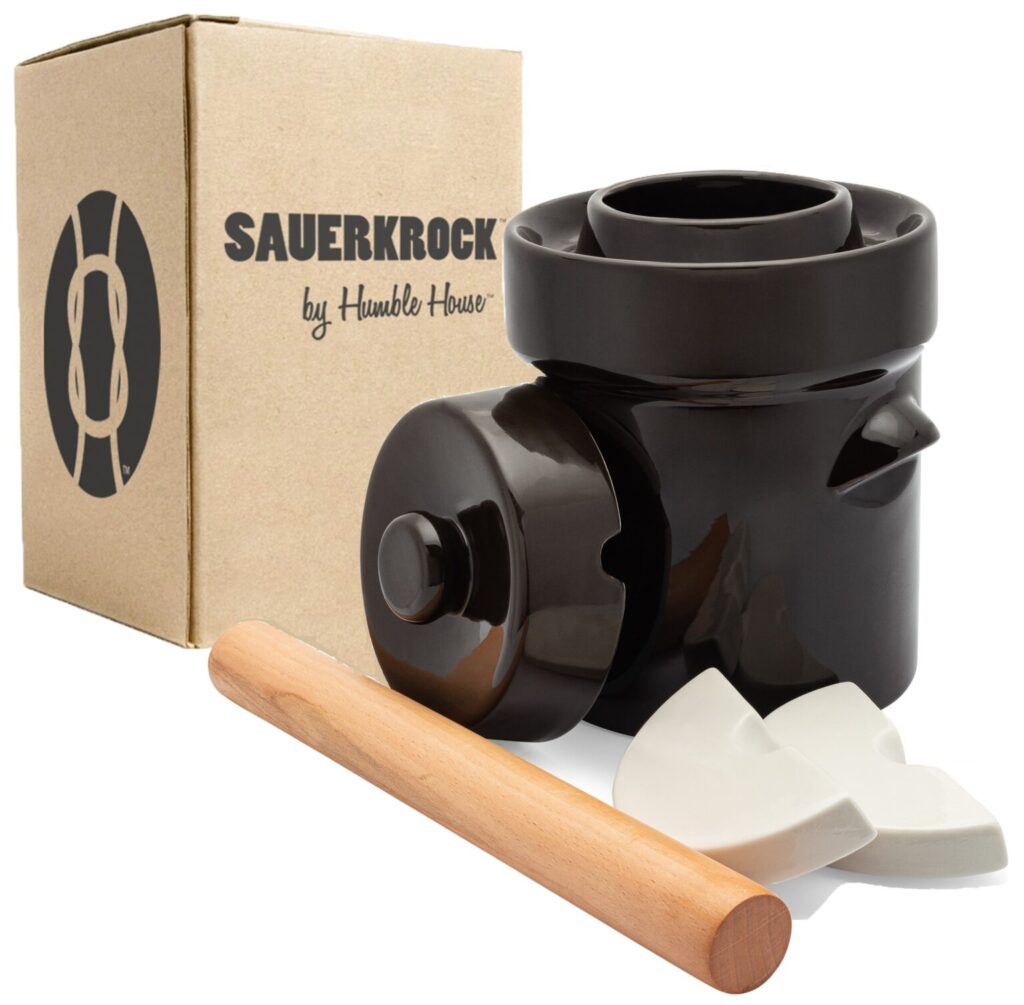



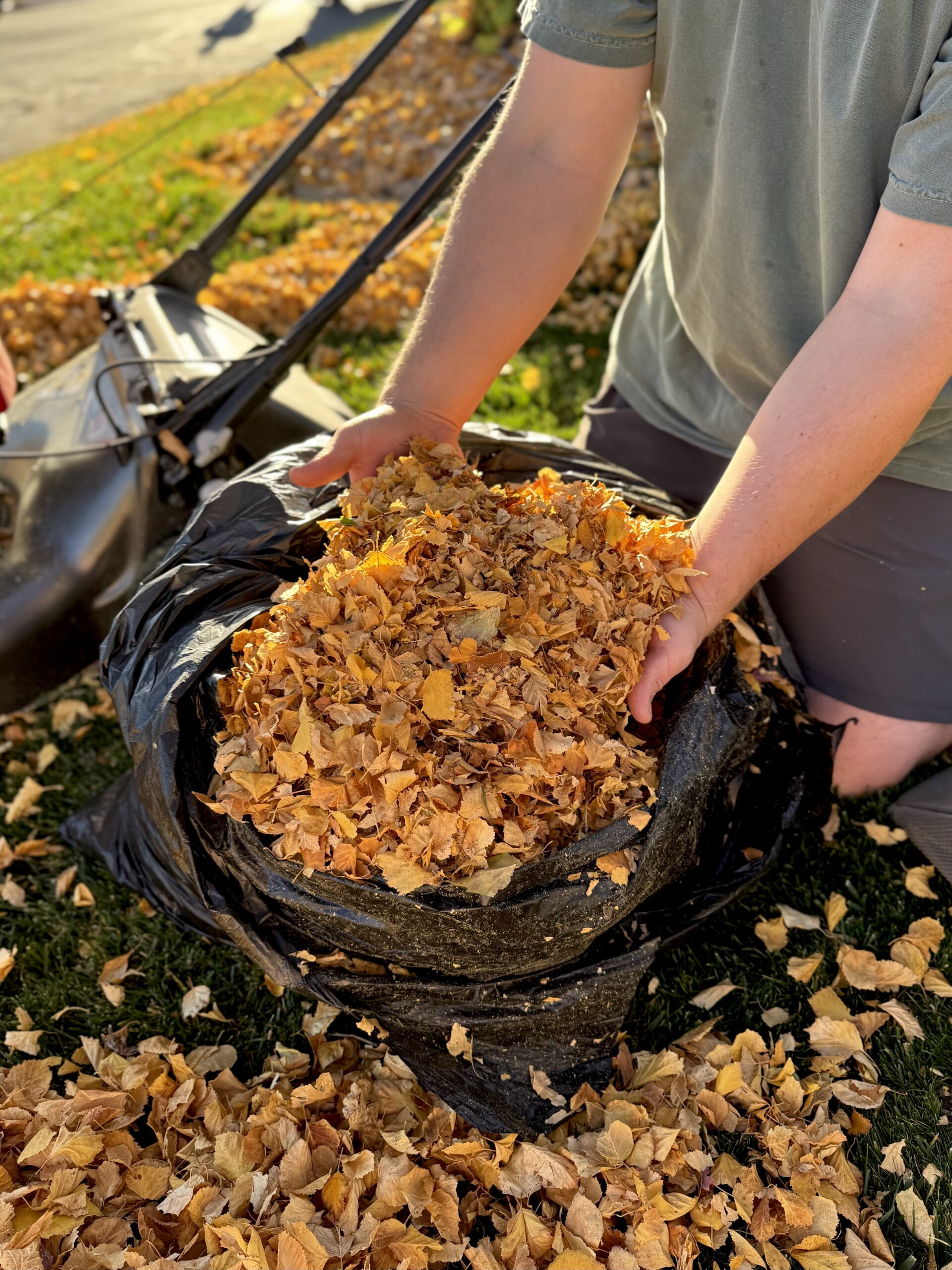
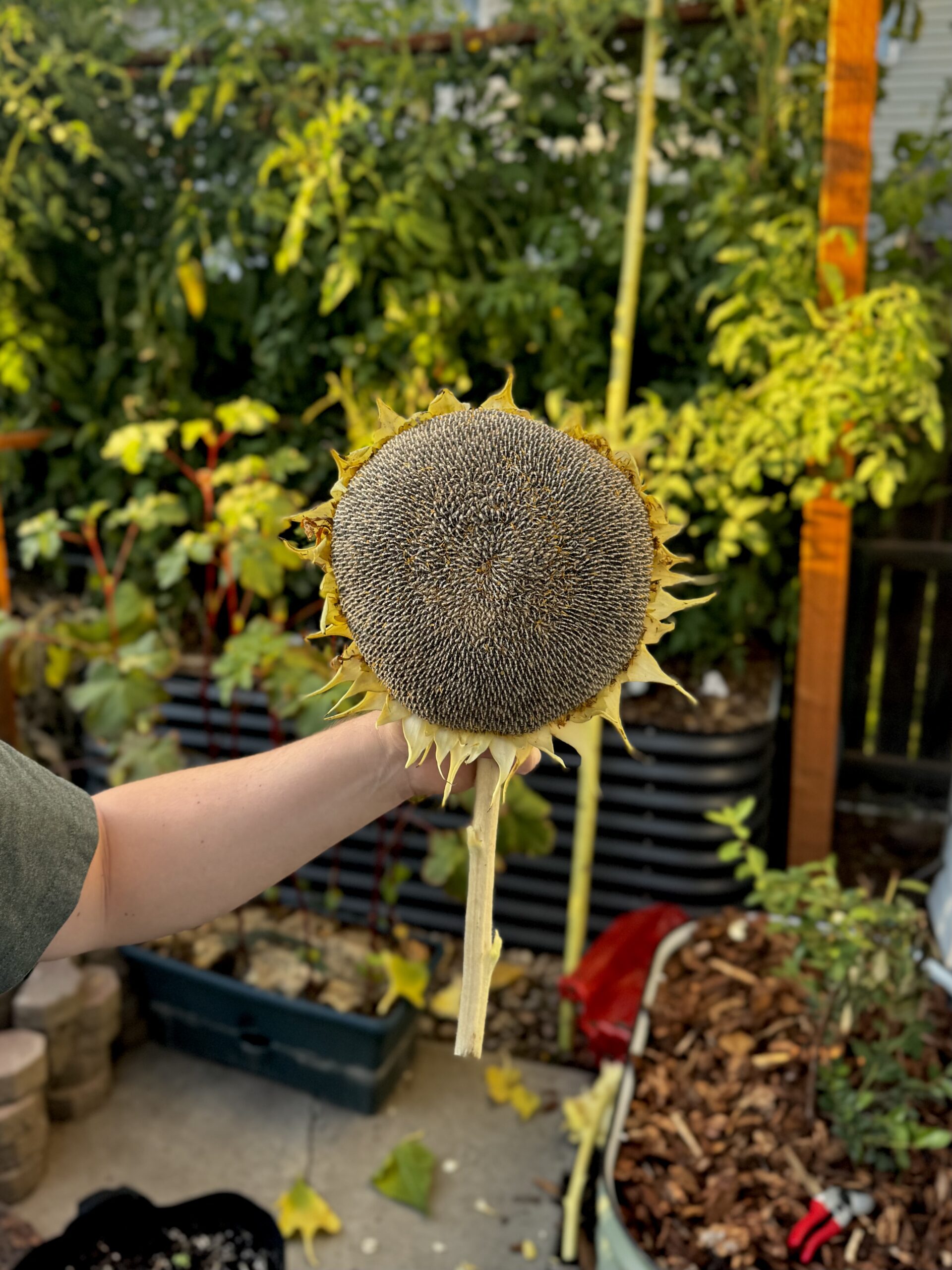

0 Comments